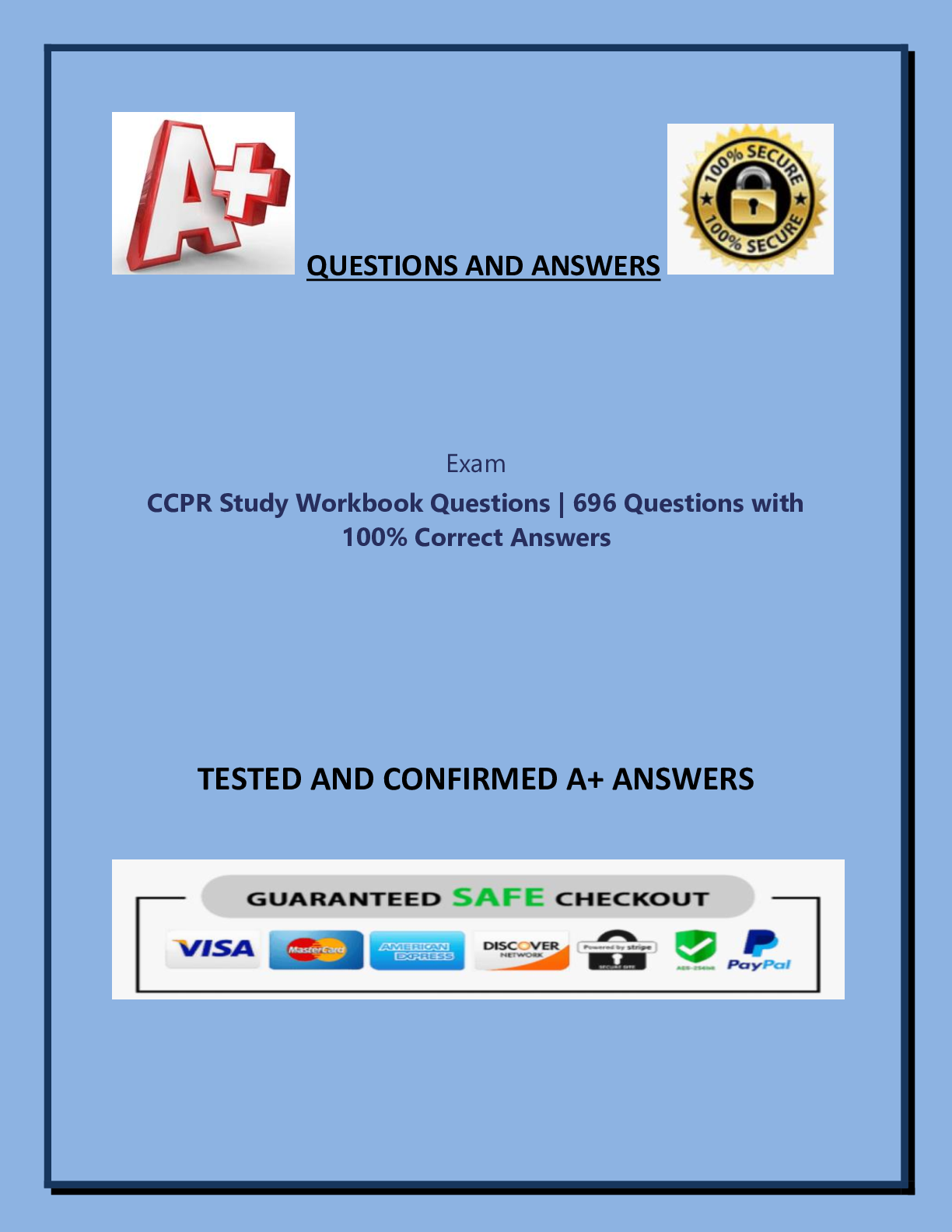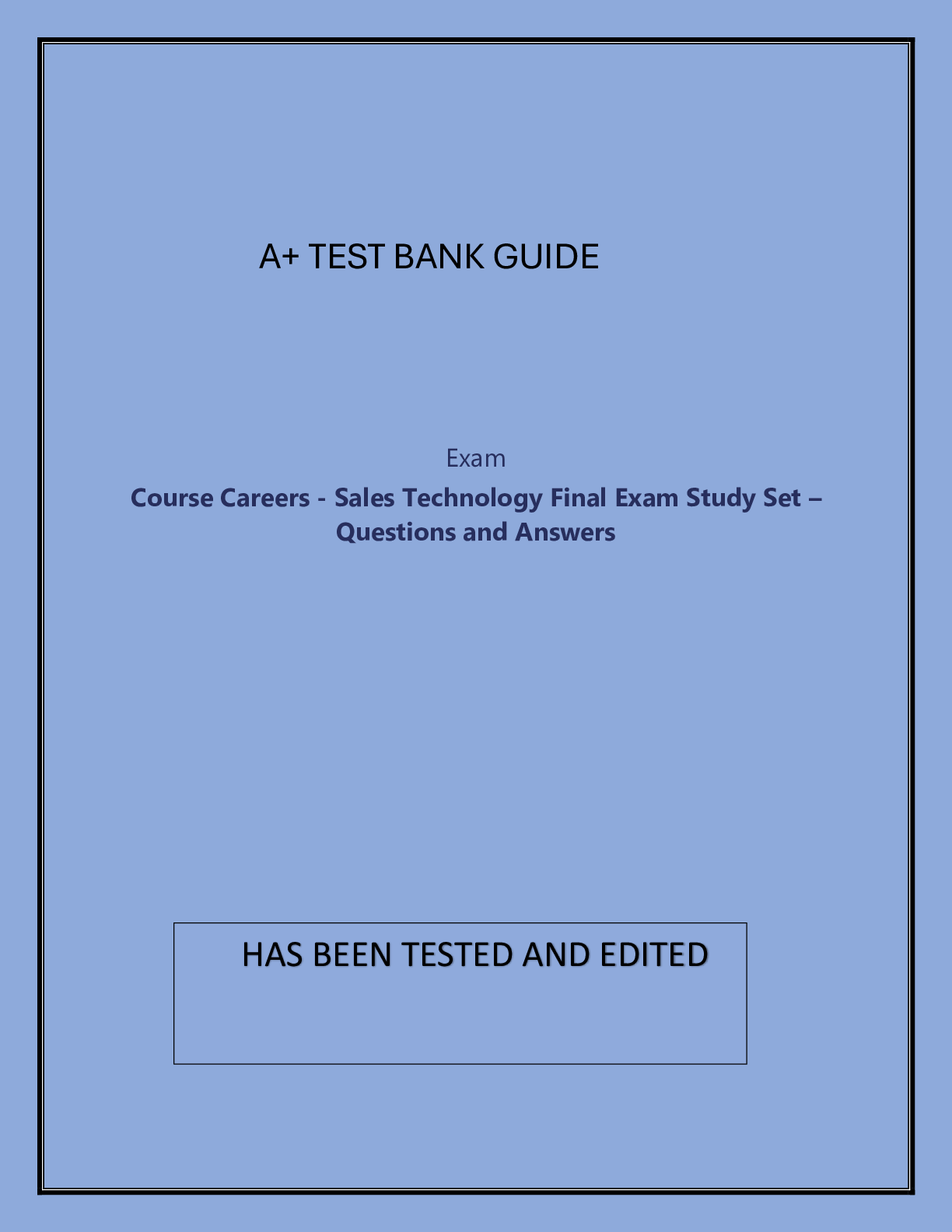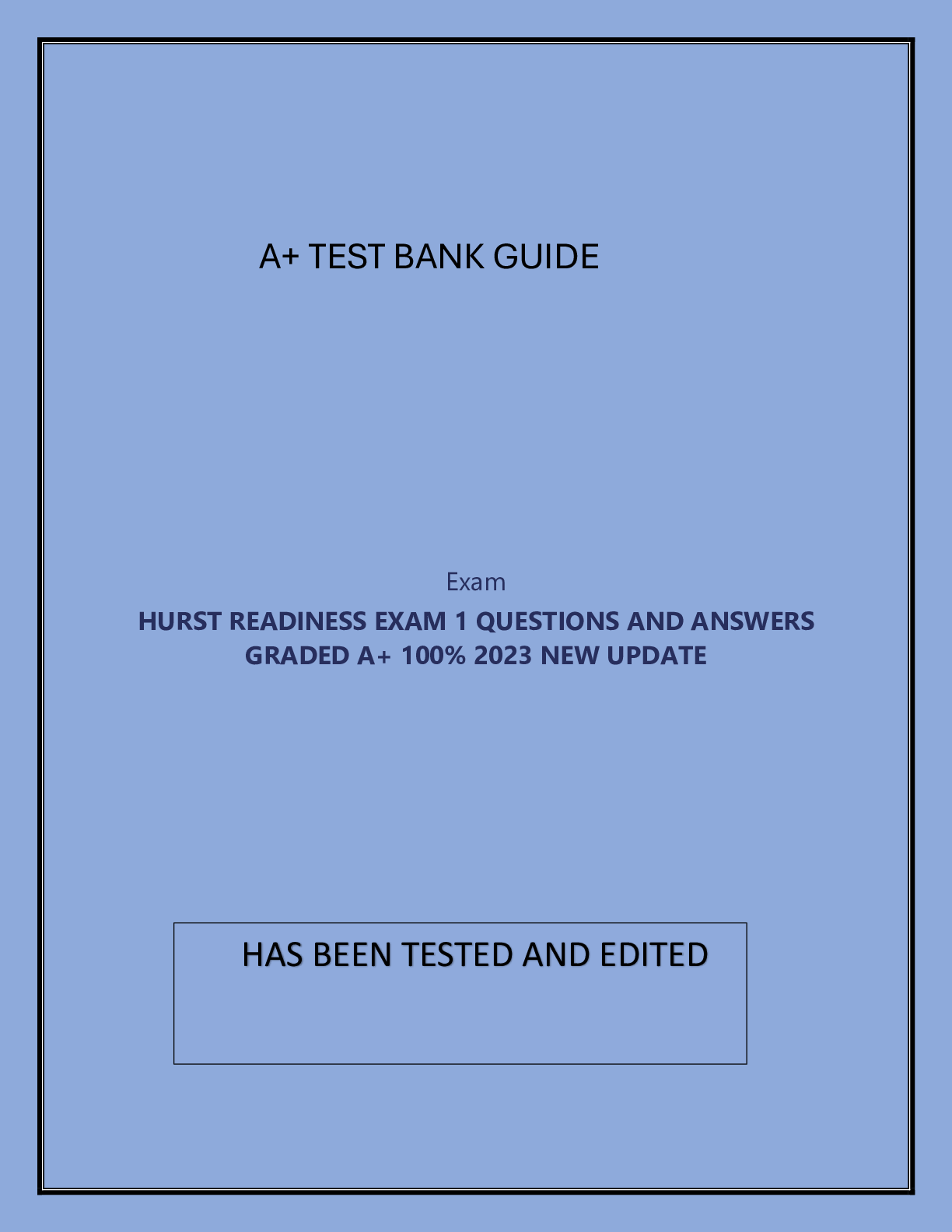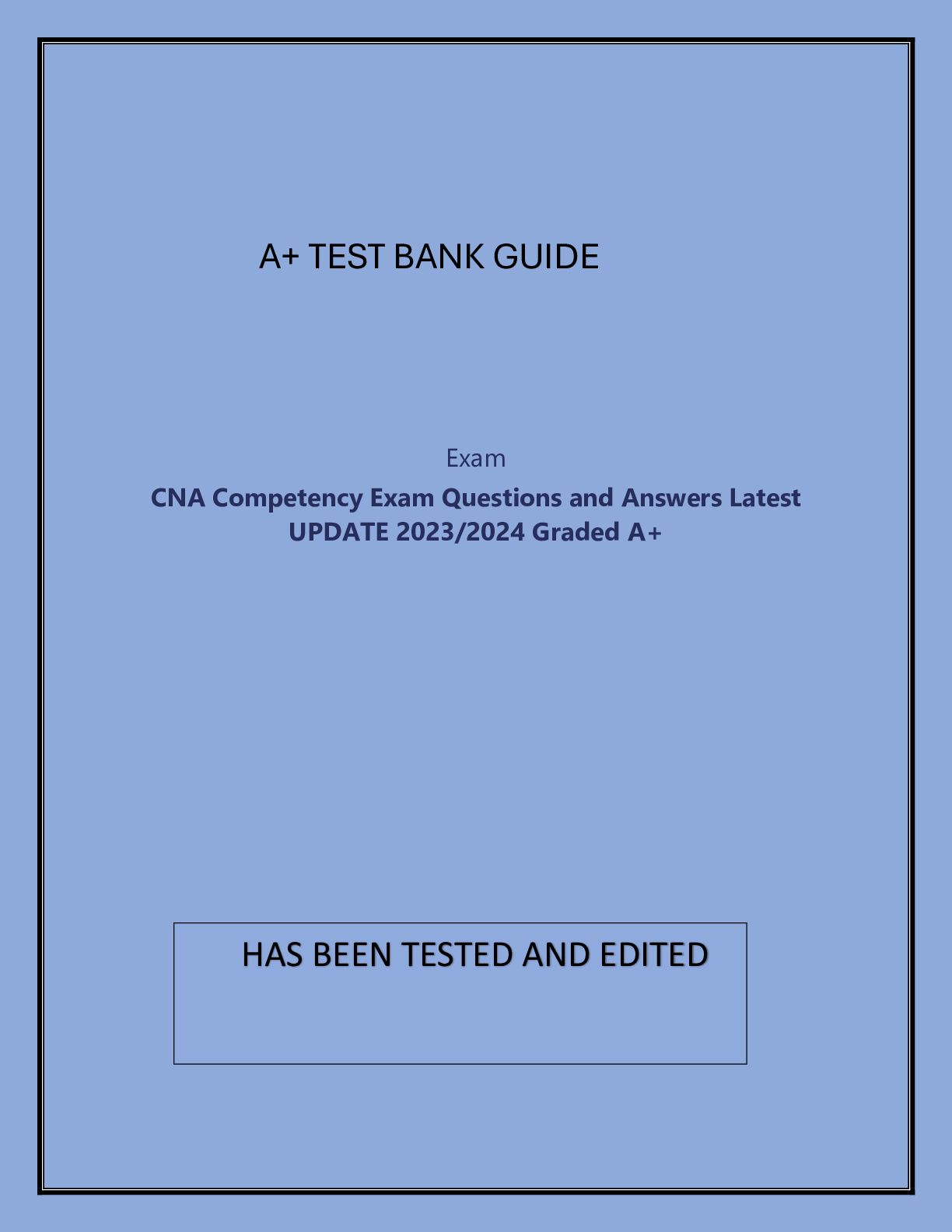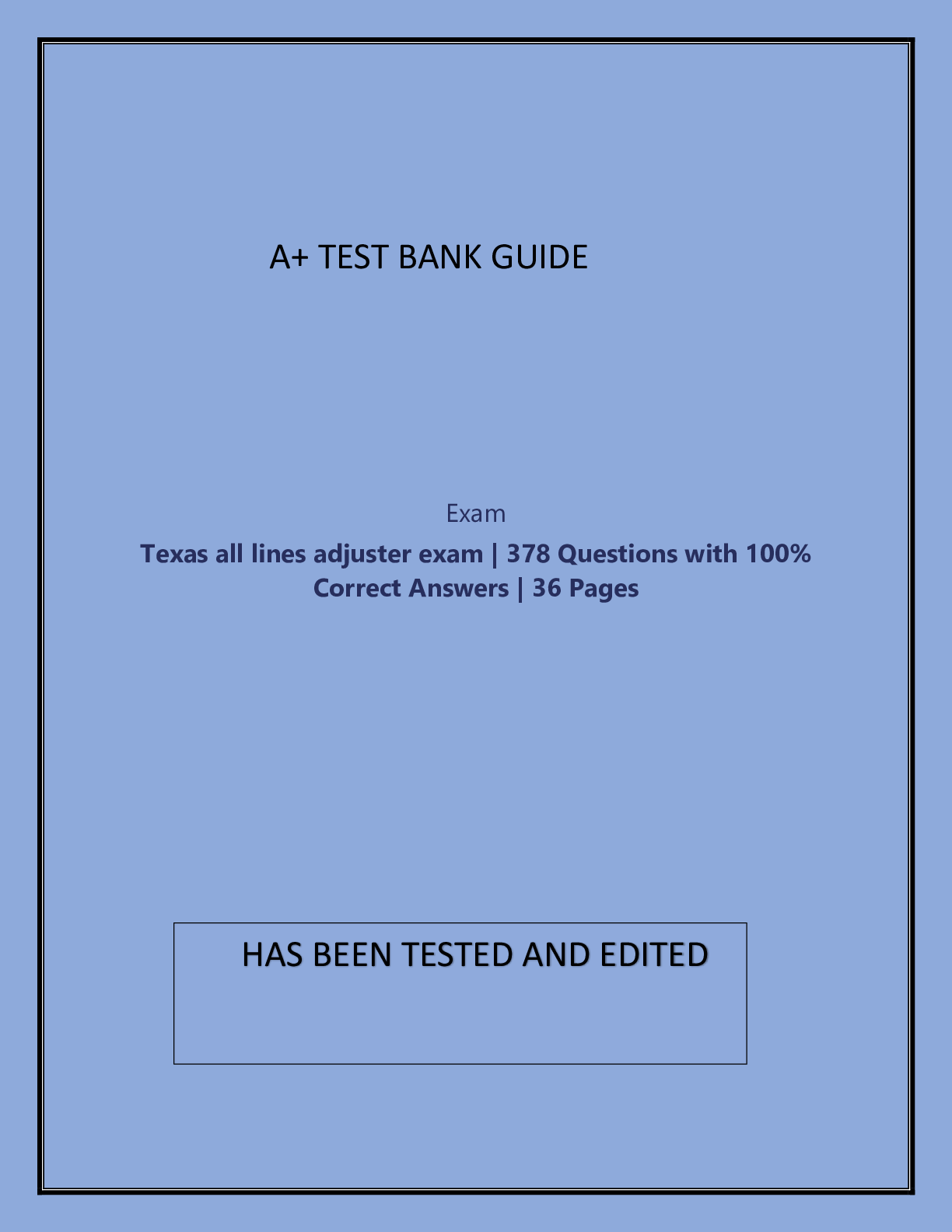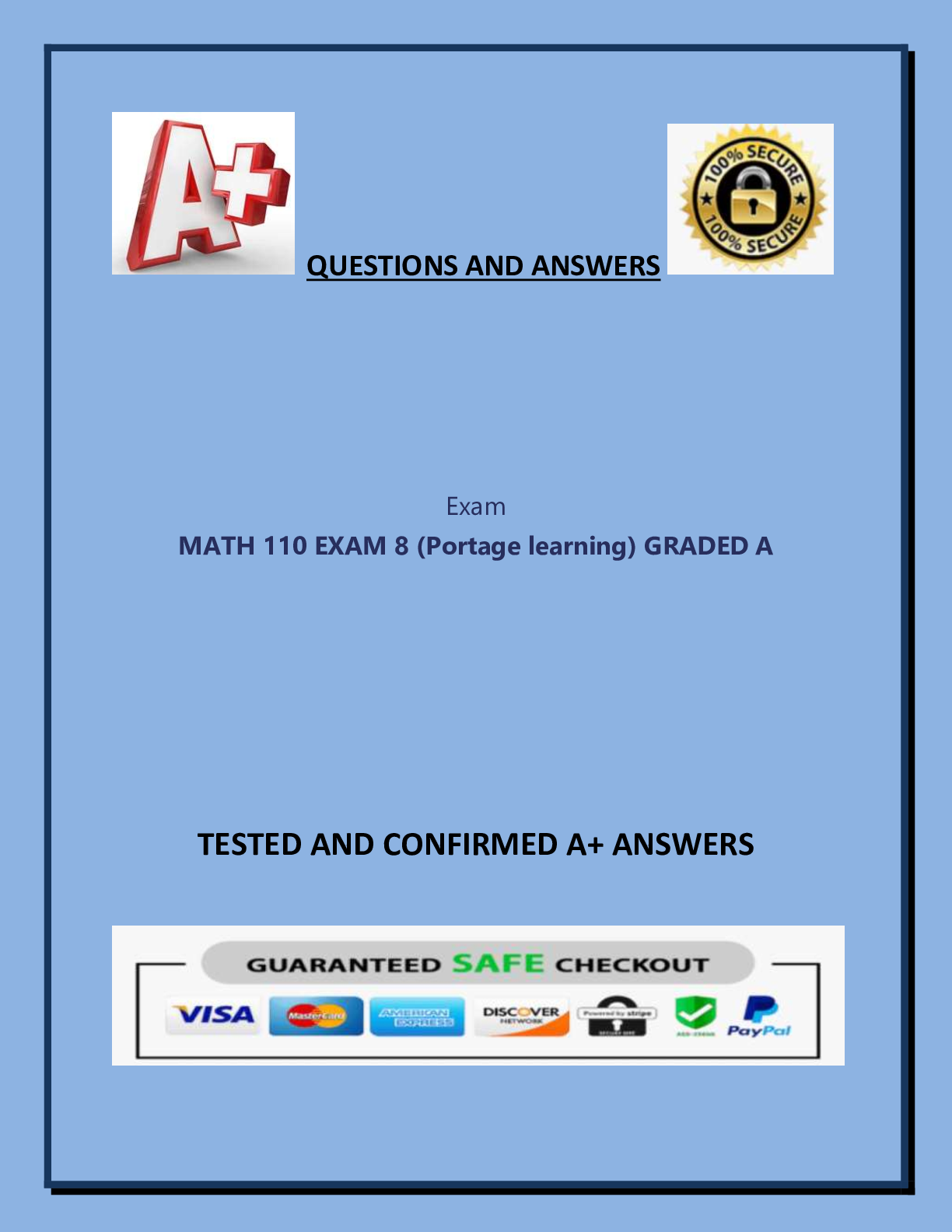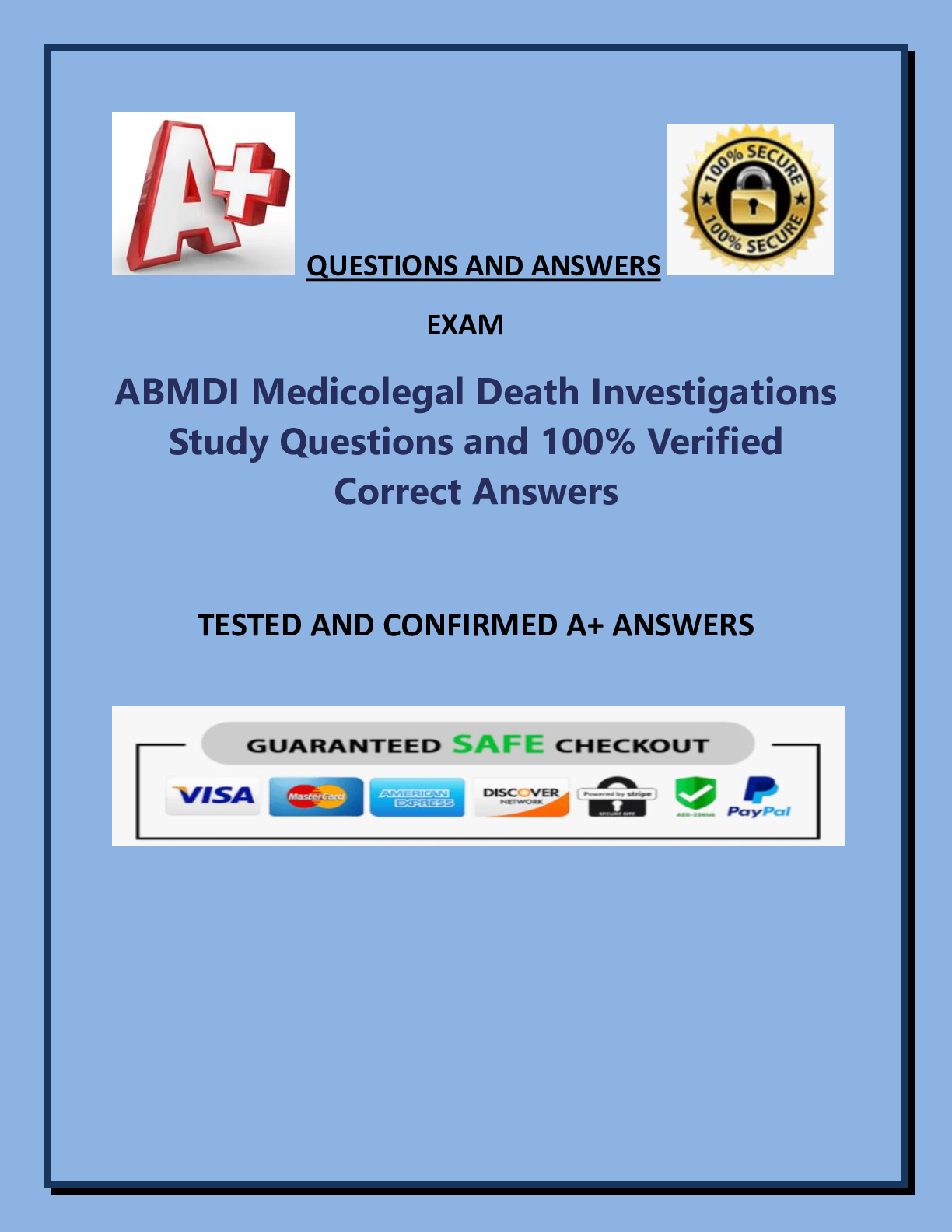Anatomy > A Level Question Paper > Anatomy of Orofacial Structures 8th Brand Test Bank (All)
Anatomy of Orofacial Structures 8th Brand Test Bank
Document Content and Description Below
Chapter 01: Oral Cavity Brand/Isselhard: Anatomy of Orofacial Structures, 8th Edition MULTIPLE CHOICE 1. A diastema is a space between two teeth in the same arch. When this occurs between the maxi... llary central incisors, it is often the result of a pronounced labial frenum. a. Both statements are true. b. The first statement is true; the second statement is false. c. The first statement is false; the second statement is true. d. Both statements are false. ANS: A A space, or lack of contact area, between any two teeth in the same arch is called a diastema. When a diastema occurs between the maxillary central incisors, it is often the result of a pronounced labial frenum extending to the crest of the alveolar ridge and possibly over the ridge. This band of firm connective tissue causes the erupting incisors to be pushed aside resulting in a diastema, or space. Correction of a diastema usually involves surgical removal, or cutting, of the frenal tissue between teeth. REF: p. 3 OBJ: To describe the boundaries and sub-boundaries of the oral cavity and the structures in each area NAT: CDA: GC I.A.6. Identify basic oral anatomy and physiology, including but not limited to: oral cavity. TOP: BLOOM: Remembering 2. Torus palatinus is seen on the a. soft palate b. hard palate c. alveolar ridge d. oral pharynx ANS: B Torus palatinus is excess bone growth and occurs in the midline of the hard palate. It may grow to varying sizes and is generally only a problem when the construction of a maxillary denture is necessary. In health, such bony protuberances, or excess bone growths, do not occur on the soft palate, alveolar ridge, or oral pharynx. REF: p. 5 OBJ: To define the terms vestibule, oral cavity proper, mucobuccal fold, frenum, alveolar mucosa, gingiva, exostoses, torus palatinus, and torus mandibularis NAT: CDA: GC I.A.2. Identify basic oral anatomy and physiology, including but not limited to: bones. TOP: BLOOM: Remembering 3. Contraction of which muscle raises the tongue upward? a. Mylohyoid b. Palatopharyngeal c. Palatoglossal d. Levator glossal ANS: A [Show More]
Last updated: 2 months ago
Preview 1 out of 345 pages
Instant download

Buy this document to get the full access instantly
Instant Download Access after purchase
Add to cartInstant download
Reviews( 0 )
Document information
Connected school, study & course
About the document
Uploaded On
Apr 09, 2024
Number of pages
345
Written in
Additional information
This document has been written for:
Uploaded
Apr 09, 2024
Downloads
0
Views
18

